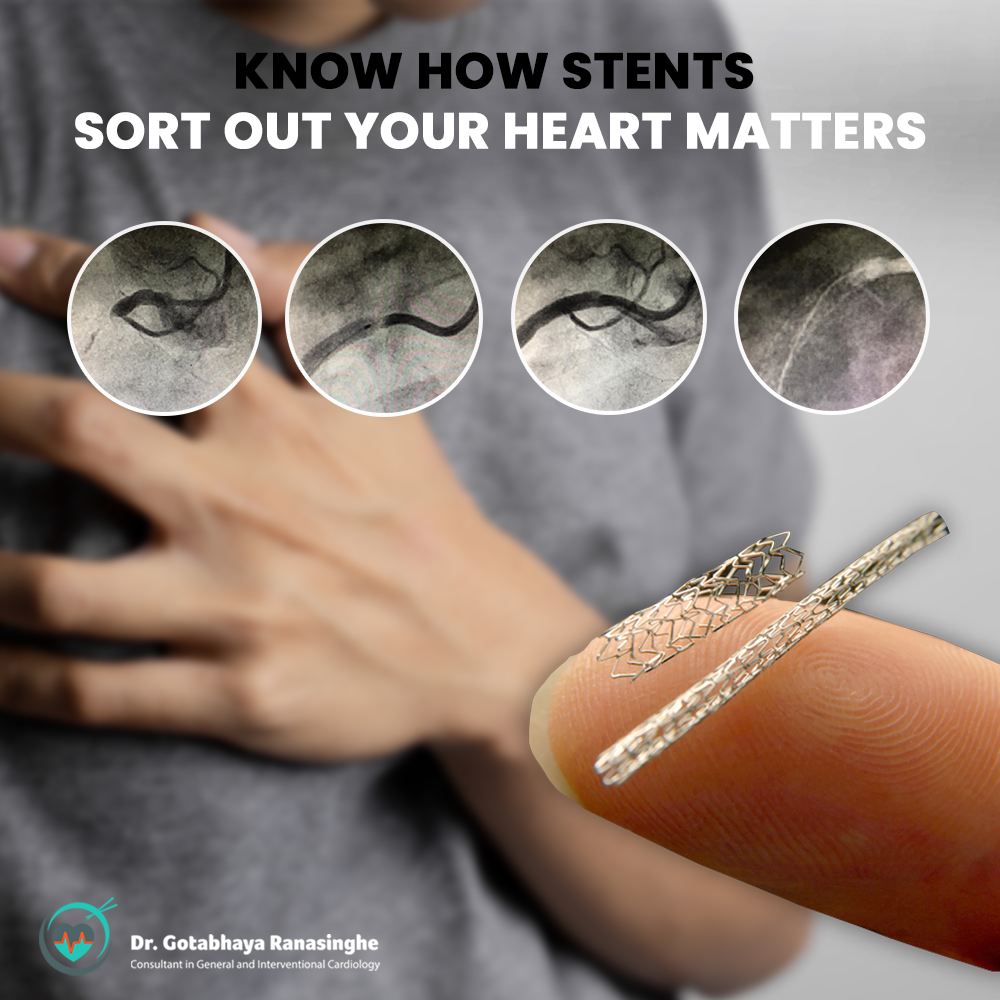Everything You Need to Know About the Stent in Your Heart!
Angioplasty is a procedure where a long, thin tube (catheter) is inserted through an artery in the wrist or the groin under local anesthesia and guided to the blocked coronary artery. The catheter has a tiny balloon at its tip. Once the catheter is in place, the balloon is inflated at the narrowed area of the heart artery. This presses the plaque or blood clot against the sides of the artery, making more room for blood flow.
After a blocked artery is treated with angioplasty to restore blood flow, the artery may get blocked again (restenosis). To prevent restenosis a stent is placed inside the artery at the spot where the blockage was cleared by angioplasty.
A stent is a tiny, metal mesh tube most commonly made out of a platinum–chromium alloy composed of iron (37%), platinum (33%), chromium (18%), nickel (9%), molybdenum (2.6%), and manganese (0.05%). The stent is placed with a catheter and permanently embedded within the artery wall to prop open and prevent it from collapsing. These implanted stents will never deteriorate and will continue to remain in the coronary artery for a lifetime.

There are 2 main types of stents:
Bare metal stents (BMS) – mesh-like tubes of thin wire without a coating or covering. Ideally, bare-metal stents will be covered by a new layer of endothelial cells, sealing it into the vessel wall, within a few weeks after implant. Individuals with BMS implantations are kept on aspirin and clopidogrel for at least a month after the procedure. In some cases where a BMS is used, the arteries may begin to narrow again. This is because the immune system sees the stent as a foreign body and attacks it, causing swelling and excessive tissue growth around the stent.
Drug-eluting stents (DES) – These stents coated with medication such as sirolimus, zotarolimus, and everolimus reduces the body’s immune reactions and tissue growth around the implanted stent in the coronary artery. However, this also delays the healing of the coronary artery around the stent and means it’s vitally important to keep taking aspirin and clopidogrel for at least up to 1 year after the procedure. This helps reduce the risk of a blood clot blocking the stent suddenly and causing a heart attack!




